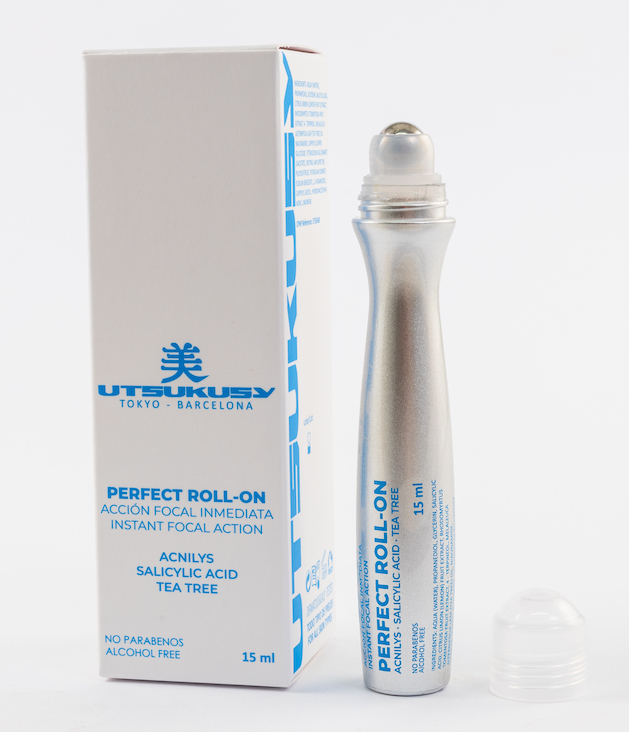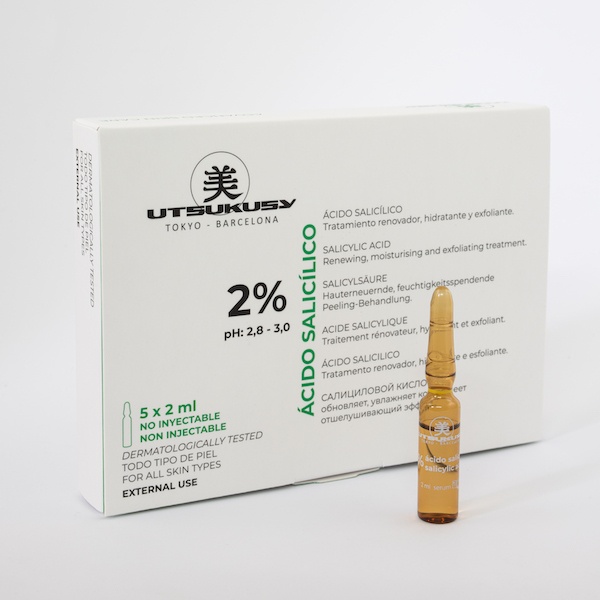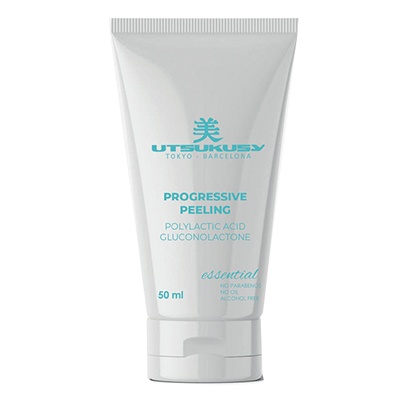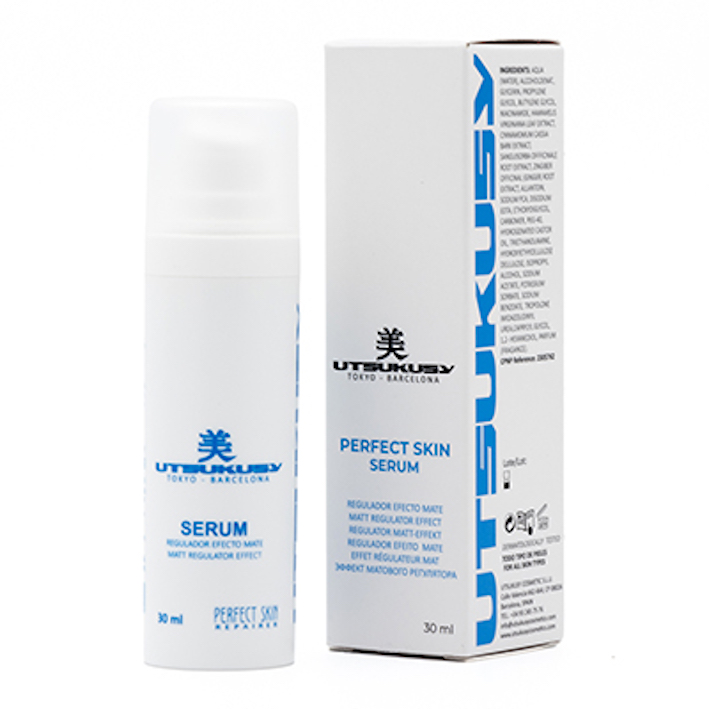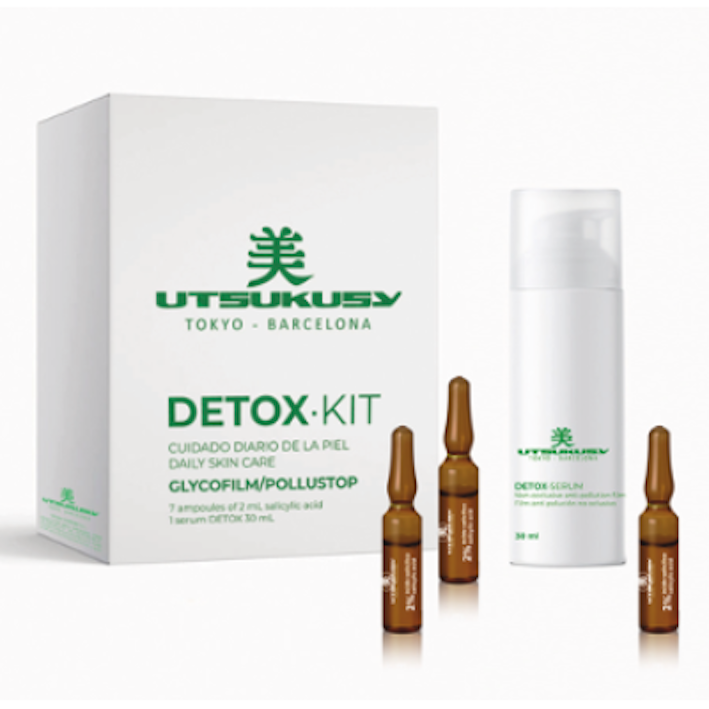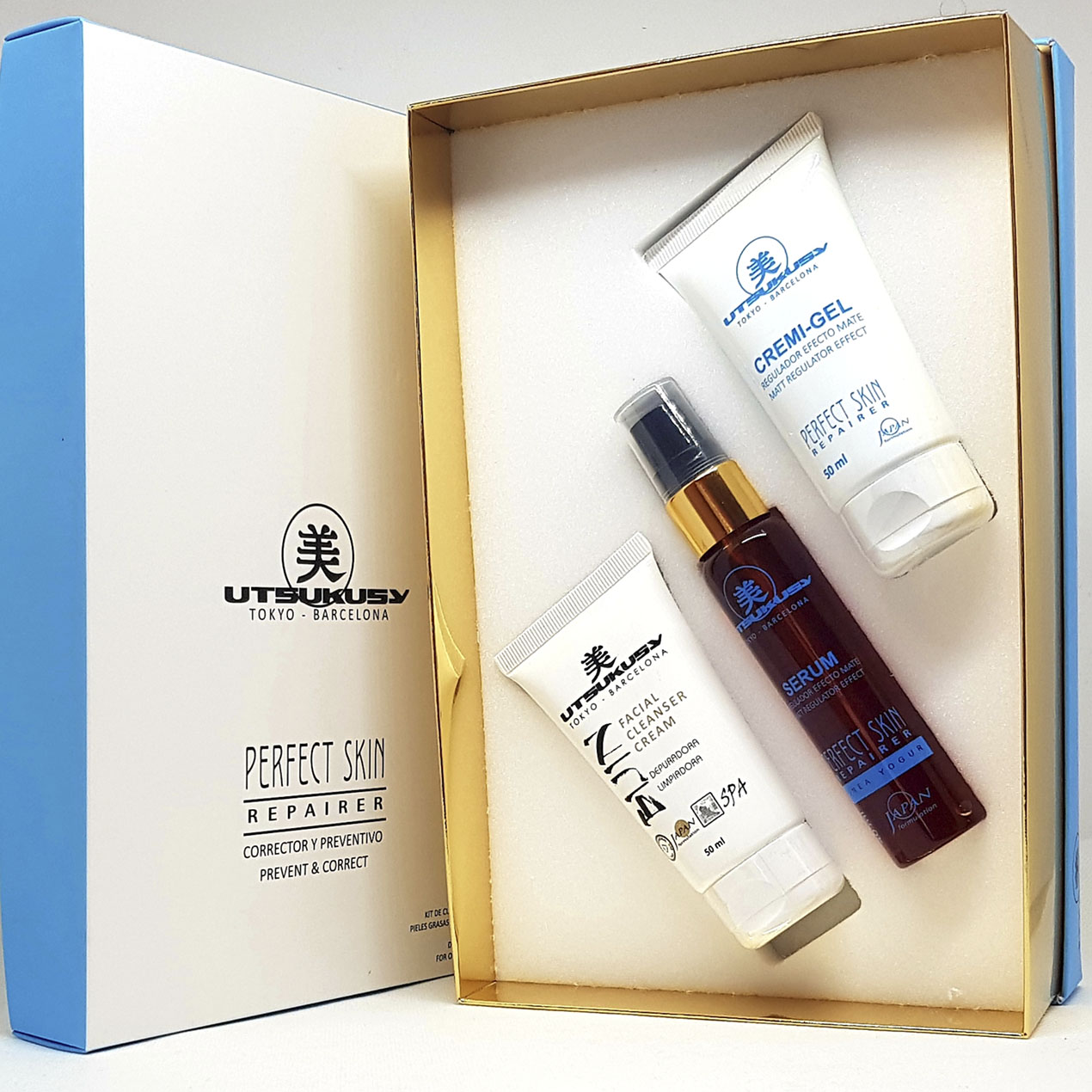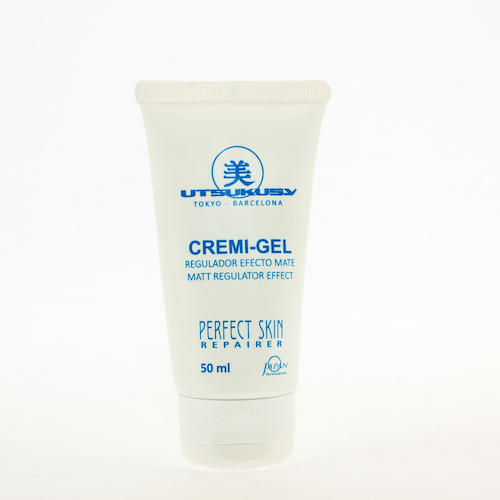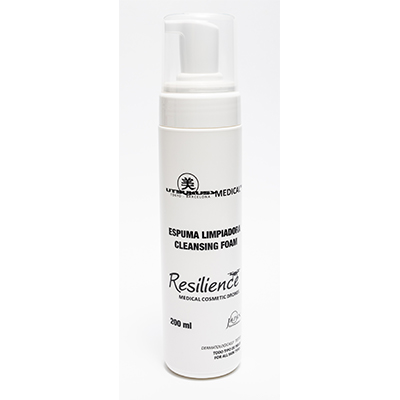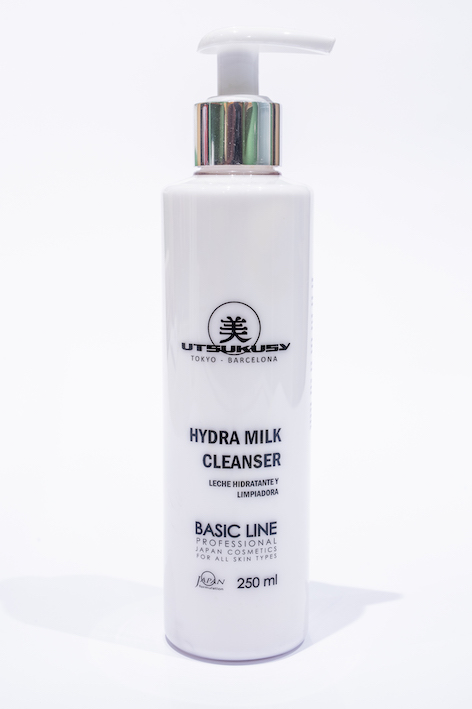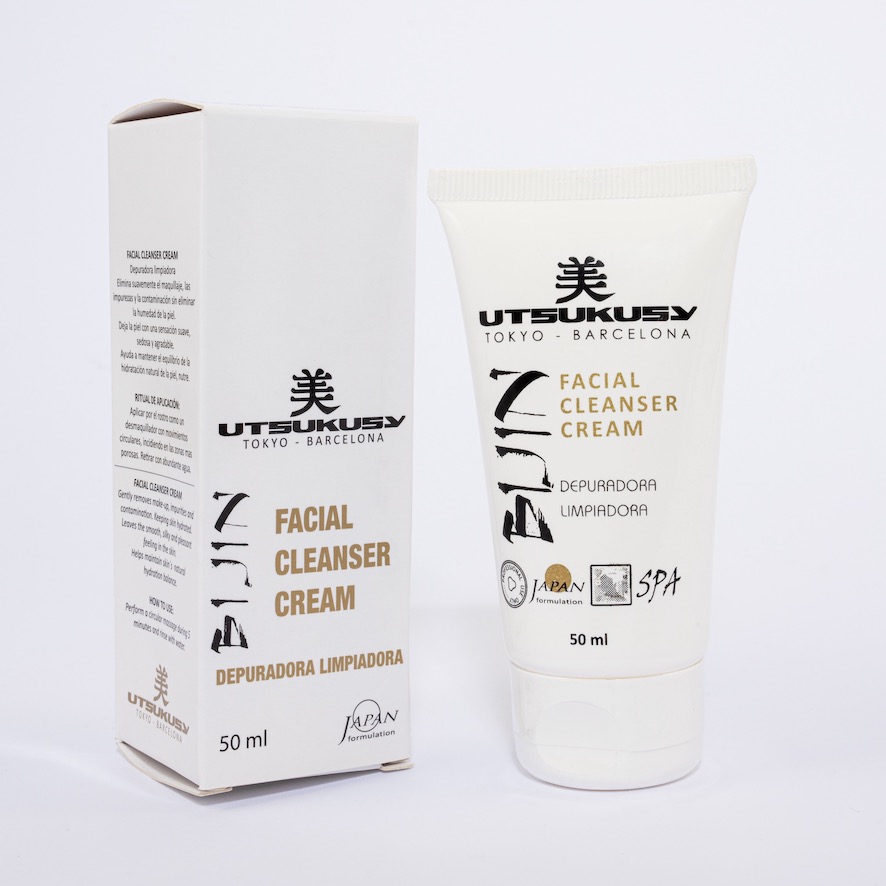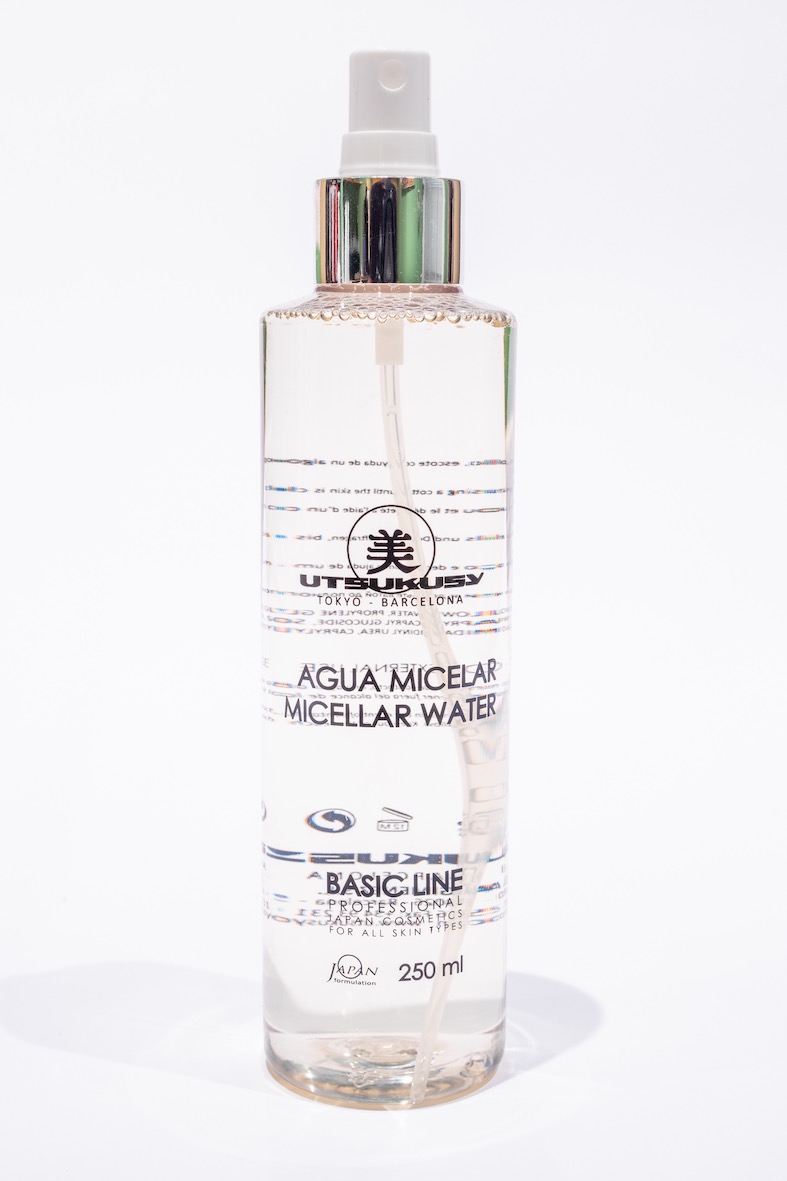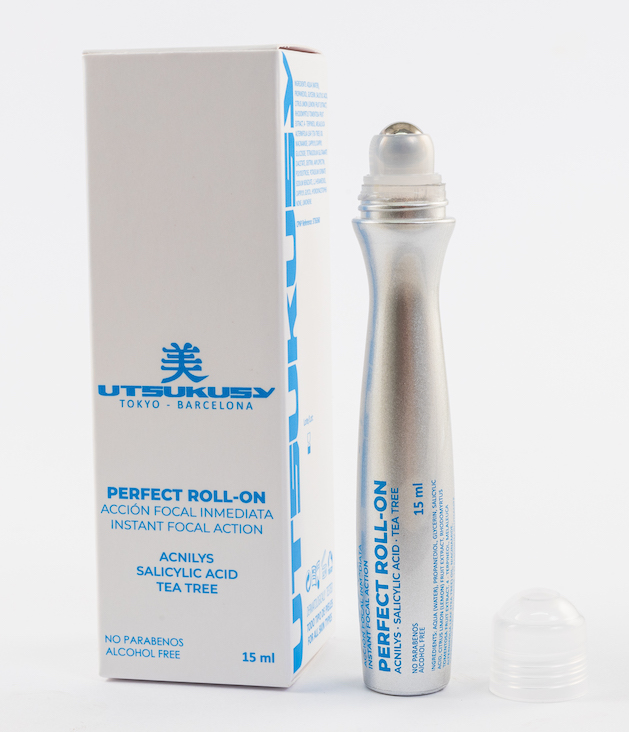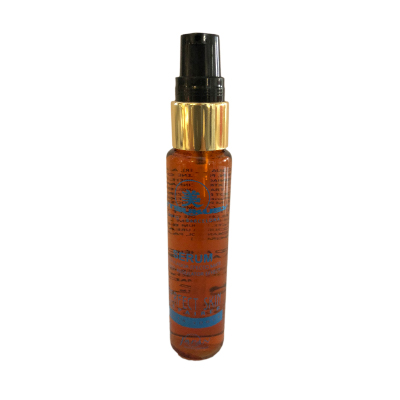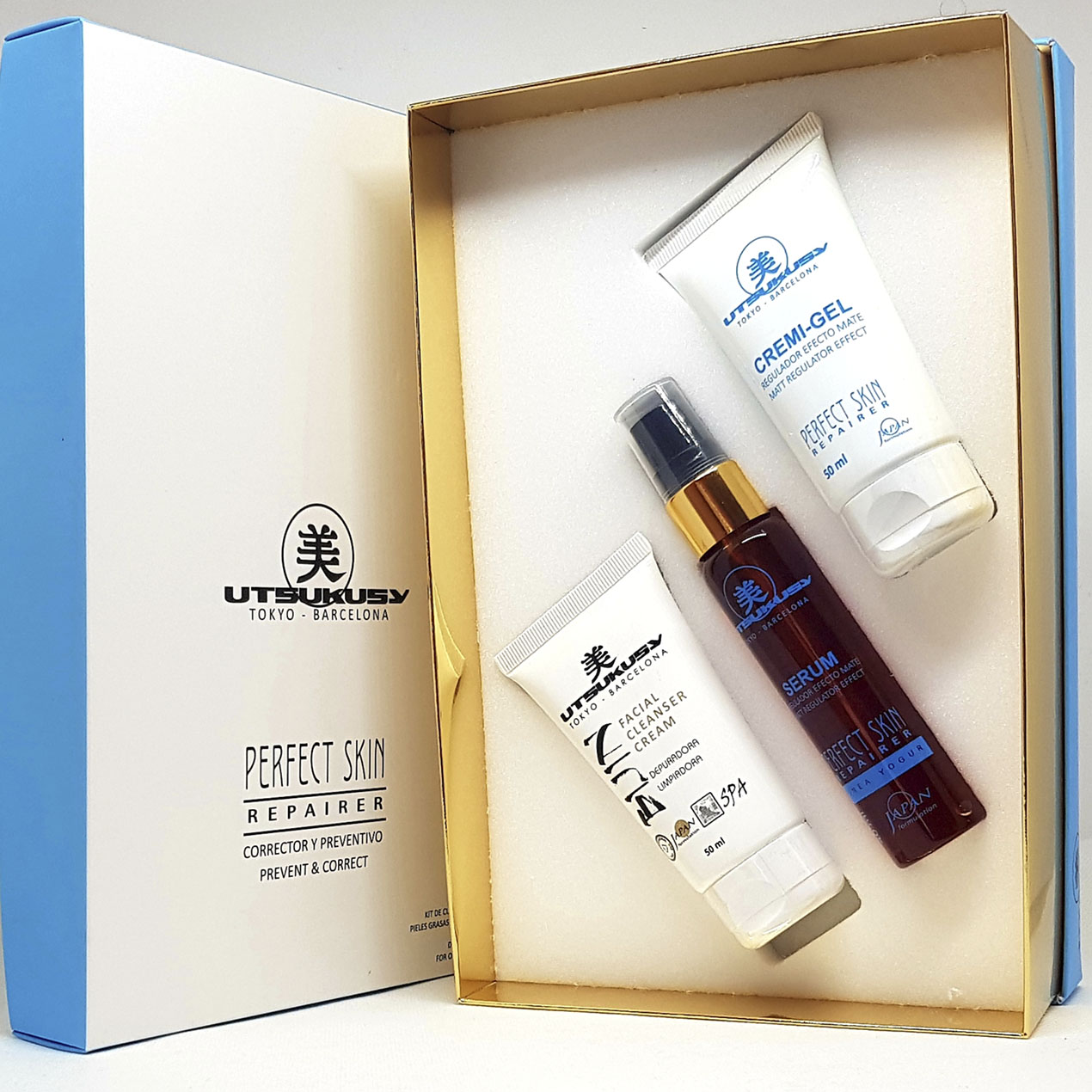Blemished skin
Content: 15 Milliliter (€2,326.67* / 1000 Milliliter)
Content: 50 ml (€103.80* / 100 ml)
Content: 30 Milliliter (€199.67* / 100 Milliliter)
Content: 8 Stück (€11.24* / 1 Stück)
Content: 50 Milliliter (€99.80* / 100 Milliliter)
Table of contents Blemished skin
- What is blemished skin?
- Causes and reasons for blemished skin
- On which parts of the body can blemishes occur?
- What is the difference between blemishes, blackheads, pimples and acne?
- Skin care for blemished skin
- Tips for the care of blemished skin
- Frequently asked questions about blemished skin
- What role does diet play in blemished skin?
- What are the most common causes of blemished skin?
- What role does diet play in blemished skin?
- What role does cleansing play in the treatment of blemished skin?
- Should I squeeze out blemishes?
- Can blemished skin also occur in adulthood?
- What role does stress play in blemished skin?
- How long does it take to see an improvement in blemished skin?
- Conclusion
Are you struggling with blemished skin and looking for effective care and treatment options? Don't worry, you're not alone! Many people suffer from blemishes, blackheads, spots and even acne. In this article, you'll learn everything you need to know about blemished skin and get valuable tips for the right skincare regime. Discover effective ingredients and proven methods to clear and rebalance your skin.
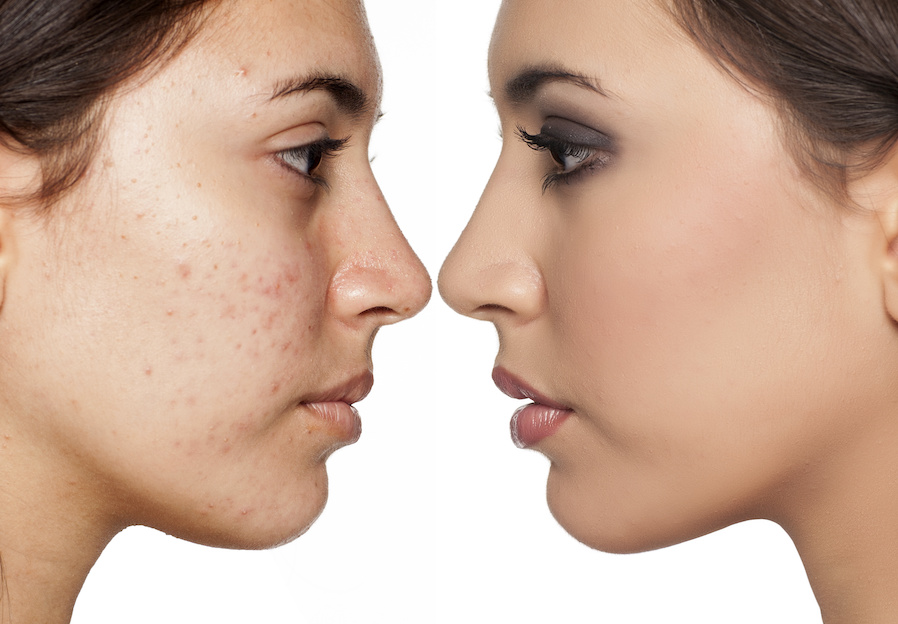
What is blemished skin?
Blemished skin is a term used to describe various skin problems characterised by clogged pores and the formation of blackheads, pimples or acne. These problems can occur due to excessive production of sebum, dead skin cells, bacterial growth or hormonal changes.
Causes and reasons for blemished skin
Blemished skin can be attributed to various causes and reasons. A basic understanding of these factors is crucial to ensure the correct care and treatment of blemished skin.
1. excessive sebum production: One of the main causes of blemished skin is excessive sebum production. Sebum is an oily substance produced by the sebaceous glands that serves to protect and moisturise the skin. However, if too much sebum is produced, it can clog the pores and lead to blackheads. Excess sebum can be caused by genetic predisposition, hormonal changes or certain medications.
2. dead skin cells: Dead skin cells can accumulate on the surface of the skin and clog pores. If these dead cells are not removed regularly, they can lead to deterioration of the skin. Inadequate skin cleansing, irregular exfoliation or impaired natural cell renewal can lead to a build-up of dead skin cells.
3. bacterial growth: Bacteria also play a role in the development of blemished skin. Bacteria naturally live on the skin, but when these bacteria multiply and enter the pores, they can cause inflammation and infection. This can lead to pimples and acne. Improper cleansing of the skin or touching the face with unwashed hands can favour bacterial growth.
4. hormonal changes: Hormonal changes can also favour blemished skin. During puberty, many teenagers experience increased sebum production due to hormonal changes in the body. This can lead to increased blemishes. Hormonal fluctuations during the menstrual cycle can also lead to a worsening of the skin. Hormonal imbalances, e.g. in certain diseases such as polycystic ovary syndrome (PCOS), can also cause blemished skin.
5. environmental factors: The environment can also have an impact on skin health. Air pollution, UV rays, stress and poor dietary habits can affect the skin and increase the appearance of blemishes. Pollutants in the air can clog pores and irritate the skin. UV rays can stimulate sebum production and promote inflammation. Stress can lead to hormonal changes and exacerbate skin problems. An unbalanced diet rich in fatty and sugary foods can also affect the appearance of the skin.
It is important to note that the causes of blemished skin can vary from person to person. Some people may have a genetic predisposition to excessive sebum production, while for others hormonal changes may play a greater role. By thoroughly analysing your own skin and, if necessary, consulting a dermatologist, the individual cause of blemished skin can be determined and a tailor-made treatment developed.
On which parts of the body can blemishes occur?
Blemishes can occur on various parts of the body. However, they are most common on the face, especially in the T-zone (forehead, nose and chin). These areas have a higher concentration of sebaceous glands, which increases the risk of clogging and the formation of blackheads and pimples.
In addition, blemishes can also appear on the back, chest, shoulders and other areas of the body. These areas also have sebaceous glands and can be affected by similar problems as the face.
What is the difference between blemishes, blackheads, pimples and acne?
Although blemishes, blackheads, pimples and acne are often used interchangeably, there are still differences between these terms. It is important to recognise the different types of blemishes in order to choose the right treatment strategy.
1. blemishes: The term "blemishes" is often used as an umbrella term for different types of skin problems. It includes both blackheads and spots. Blemishes can take the form of clogged pores, slight redness or small skin imperfections. They can occur due to excess sebum, dead skin cells or a reaction to external influences such as dirt and bacteria.
2. blackheads: Blackheads, also known as comedones, are small, black or white dots that are visible on the surface of the skin. Blackheads occur when the pores are clogged and the sebum they contain comes into contact with oxygen and oxidises. White blackheads occur when the pores are also clogged but no oxidation takes place. Blackheads are often found on the T-zone of the face (forehead, nose, chin), where the sebaceous glands are particularly active.
3. pimples: Pimples are inflamed skin blemishes caused by clogged and inflamed pores. They can appear as red, swollen bumps or pus blisters on the skin. Pimples occur when bacteria enter the clogged pores and cause an inflammatory reaction. Squeezing pimples can lead to infection and scarring, so it is important to avoid this.
4 Acne: Acne is a more advanced form of blemished skin characterised by inflamed pimples, deep cysts and lumps. Acne can occur in varying degrees of severity, from mild to severe acne. Severe acne can cause deeper inflammation, severe redness and scarring. The exact causes of acne are not fully understood, but hormonal changes, genetic predisposition and excessive sebum production all play a role.
Differentiating between blemishes, blackheads, pimples and acne is important in order to choose the right treatment. While mild blemishes may be improved with a consistent skincare routine and the use of non-comedogenic products, acne may require more intensive treatment, including prescription medication or topical treatments. For persistent or severe skin problems, it is advisable to consult a dermatologist for a professional diagnosis and personalised treatment plans.
Skin care for blemished skin
An effective skin care regime is crucial to treat blemished skin and reduce the appearance of blemishes. Here are some important steps and tips to follow:
Skin cleansing
Proper skin cleansing is a crucial step in the care of blemished skin. Thorough cleansing can remove excess sebum, dead skin cells, dirt, bacteria and other impurities from the skin's surface. Effective skin cleansing helps to clear pores, reduce inflammation and minimise the appearance of blemishes. Here are some important aspects to consider when cleansing your skin:
1. cleansing products: Choose mild cleansing products specifically designed for blemished skin. Avoid strongly scented or irritating ingredients as these can further irritate the skin. Look for products that contain salicylic acid, benzoyl peroxide or tea tree oil as these ingredients can be effective in fighting blemishes. Make sure that the cleansing products are pH-neutral to maintain the skin's balance.
We can recommend the facial cleansers from Utsukusy Cosmetics:
Resilience Cleansing Foam from Utsukusy Cosmetics
Bijin Cleansing Cream from Utsukusy Cosmetics
Micellar water from Utsukusy Cosmetics
2. cleansing method: Start cleansing with warm water to open the pores and loosen the dirt. Then apply a small amount of cleanser to damp skin and massage gently in circular motions. Concentrate particularly on the T-zone, where the sebaceous glands are more active. Avoid excessive rubbing or pulling of the skin as this can damage the skin barrier. Rinse the face thoroughly with lukewarm water to remove any residue.
3. frequency of cleansing: Cleanse your face twice a day, morning and night. Regular cleansing not only removes dirt and excess sebum, but also prepares the skin to absorb skincare products. However, avoid over-cleansing as this can lead to over-stressing the skin. If you exercise or wear heavy make-up, it is advisable to cleanse your face immediately afterwards to remove sweat and make-up residue.
4. additional cleansing steps: In addition to daily facial cleansing, additional cleansing steps can be beneficial. Regular exfoliation helps to remove dead skin cells and promote cell renewal. Choose a gentle exfoliating product and use it 1-2 times a week. A deep cleansing mask can also be helpful to thoroughly clear the pores. Make sure that the mask is not too aggressive and does not dry out the skin.
5. after cleansing: After cleansing, gently pat your face dry and avoid rubbing to prevent irritation. Follow with a toning facial cleanser or toner to soothe and rebalance the skin. Follow with a light, non-comedogenic moisturiser to hydrate and protect the skin.
Skin cleansing is a fundamental step in the care of blemished skin. A consistent and appropriate cleansing routine can help reduce the appearance of blemishes and keep skin healthy and clear. However, be careful not to over-cleanse your skin or use irritating products as this can lead to worsening skin problems. If you have any questions or uncertainties, it is advisable to consult a dermatologist for a personalised cleansing strategy
Skin care
Careful skin care is essential to improve blemished skin and minimise the appearance of blemishes. A targeted and regular skincare routine can help restore skin balance, reduce inflammation and control the appearance of blemishes. Here are some important aspects to consider when it comes to skincare:
1. moisturiser: even if your skin is blemished, it still needs moisturising. Choose a lightweight, non-comedogenic moisturiser that is specifically formulated for blemish-prone skin. Such moisturisers will hydrate the skin without clogging the pores. Make sure that the moisturiser also contains ingredients that can have an anti-inflammatory effect, such as chamomile, aloe vera or green tea.
2. sun protection: Protection from UV rays is an essential part of skin care. UV rays can stimulate sebum production and increase inflammation. Therefore, use a broad-spectrum sunscreen with at least SPF 30 every day, even if it is cloudy or you spend most of your time indoors. Choose an oil-free and non-comedogenic sun cream to reduce the risk of further clogging of the pores.
3. spot treatment: For acute blemishes, a targeted spot treatment is helpful to reduce inflammation and speed up healing. Use products that have been specially developed for treating blemishes and contain ingredients such as benzoyl peroxide, salicylic acid or tea tree oil. Apply the spot treatment directly to the affected areas and follow the manufacturer's instructions.
If you need quick help, reach for the Perfect Roll-On from Utsukusy Cosmetics!
Perfect Roll-On from Utsukusy Cosmetics
4 Avoid squeezing pimples: Although it can be tempting to squeeze pimples, this is not a recommended method for treating blemished skin. Squeezing can increase inflammation, worsen infection and lead to scarring. If you feel the need to treat a pimple, use a spot treatment or consult a dermatologist for professional help.
5. diet and lifestyle: A healthy diet and lifestyle can also have a positive impact on the skin. Make sure you eat a balanced diet rich in fresh fruit, vegetables, wholemeal products and lean protein. Avoid excessive consumption of sugary foods, fatty foods and highly processed foods as these can increase the risk of inflammation. Drink plenty of water to moisturise the skin and flush toxins from the body.
In addition to diet, a healthy lifestyle is important. Stress can lead to worsening blemished skin as it affects hormone balance and can stimulate sebum production. Find ways to reduce stress, such as regular physical activity, relaxation techniques like yoga or meditation, getting enough sleep and making time for hobbies or social activities. It is also important to avoid smoking, as smoking can accelerate skin ageing and worsen the appearance of blemishes.
6. cleaning make-up utensils: If you use make-up, make sure you regularly clean your make-up utensils such as brushes, sponges and sponge applicators. Make-up utensils can accumulate bacteria and dirt, which in turn can clog pores. Wash the utensils regularly with mild detergent or special cleaning products for make-up utensils and allow them to dry thoroughly before using them again.
7 Dermatological treatments: For severe acne or stubborn blemishes, it may be a good idea to see a dermatologist. A dermatologist may recommend professional treatments such as chemical peels, laser therapy, microdermabrasion or prescription medications to improve the skin and treat blemishes. A personalised consultation with a dermatologist can help determine the best treatment option for your specific skin needs.
A comprehensive and consistent skincare regime is key to improving blemished skin. By following a proper cleansing and skincare routine, maintaining a healthy diet and lifestyle, and seeking professional help when needed, you can reduce the appearance of blemished skin and achieve healthy, glowing skin.
Tips for the care of blemished skin
If you suffer from blemished skin, there are some helpful tips you can incorporate into your daily skincare routine to reduce the appearance of blemishes and keep your skin healthy. Here are some detailed tips to keep in mind:
Wash your face twice a day
Regular facial cleansing is essential to remove excess sebum, dirt and impurities. Wash your face thoroughly in the morning and evening with a mild cleanser that is especially suitable for blemished skin. However, avoid excessive washing as this can dry out the skin and stimulate sebum production.
Use gentle cleansing products
Choose cleansing products that are gentle on the skin and do not contain any aggressive ingredients. Look for pH-neutral cleansers that do not disturb the skin's natural balance. Also avoid strongly scented or irritating products, as these can irritate the skin. Opt for cleansing products with ingredients such as salicylic acid, benzoyl peroxide or tea tree oil, as these can fight impurities and reduce inflammation.
Click here for the facial cleansers on Beauty.Camp
Exfoliation for dead skin
Regular exfoliation can help to remove dead skin cells and unclog pores. Choose a gentle exfoliating product specifically designed for blemished skin and use it 1-2 times a week. Exfoliation also helps to promote cell renewal and improve skin texture. However, be careful not to exfoliate too aggressively as this can irritate the skin.
Use non-comedogenic products
When choosing cosmetics and skincare products, you should look for non-comedogenic products. These products are specially formulated to avoid clogging pores and causing additional blemishes. Choose oil-free formulations and products labelled 'non-comedogenic' to minimise the risk of further skin problems.
Moisturising care
Even blemished skin needs moisturising to stay healthy and supple. Use a light, oil-free moisturiser that has been specially developed for blemished skin. Make sure that the moisturiser also contains ingredients that have anti-inflammatory properties, such as chamomile, aloe vera or green tea. Adequate moisturisation helps to maintain the skin's balance and prevent further blemishes.
If you are prone to oily and blemished skin, we recommend the Cremi-Gel Serum and the Cremi-Gel Cream from Utsukusy. Both products plus Bijin facial cleansing cream are available in the Cremi Gel - Perfect Skin Home Care Set.
Cremi Gel Serum from Utsukusy Cosmetics
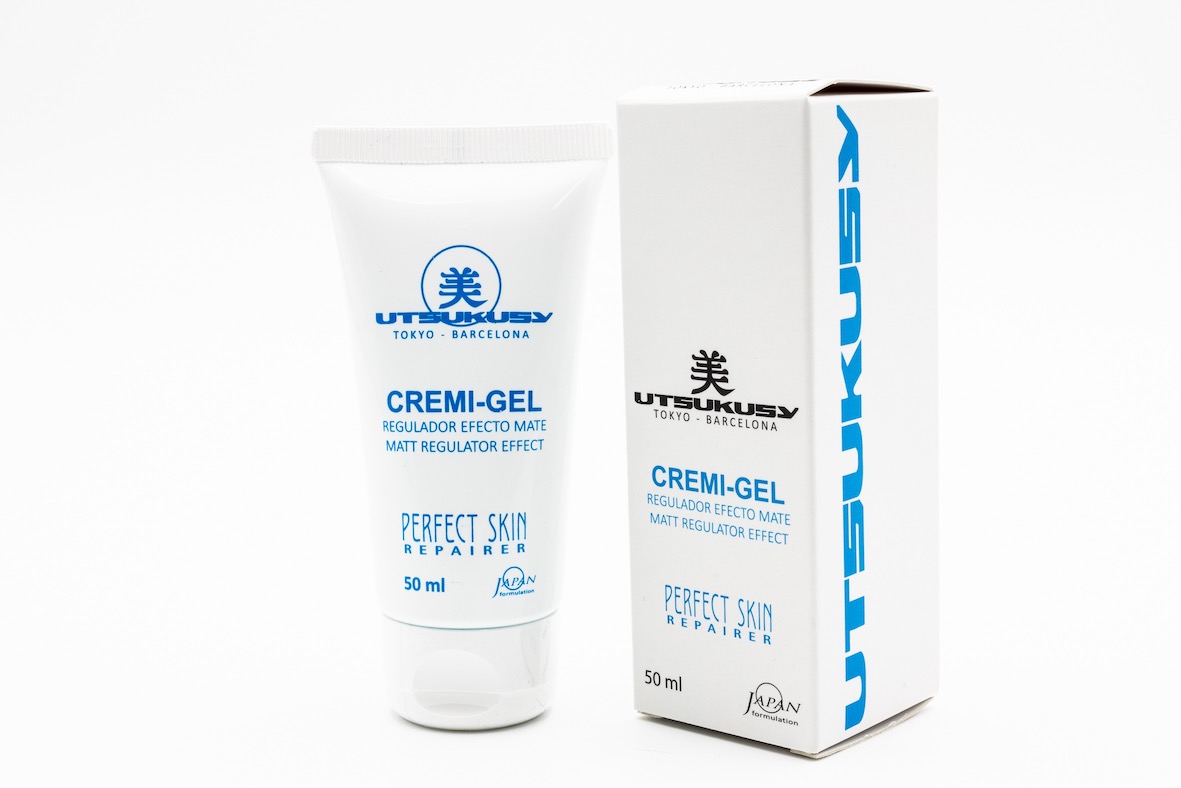
Cremi Gel Cream from Utsukusy Cosmetics
Cremi Gel Perfect Skin Homecare Set from Utsukusy
Avoid excessive make-up
Using make-up can help cover blemishes, but it's important not to overdo it. Only apply as much make-up as necessary and avoid heavy, oily or comedogenic products that can clog pores.
The tinted day creams from Utsukusy Cosmetics with SPF 50 could also be a great help, as they are multifunctional creams that give your skin an even complexion, moisturise it (hyaluronic acid) and, very importantly for blemished skin, inhibit excessive sebum production with pomegranate extract.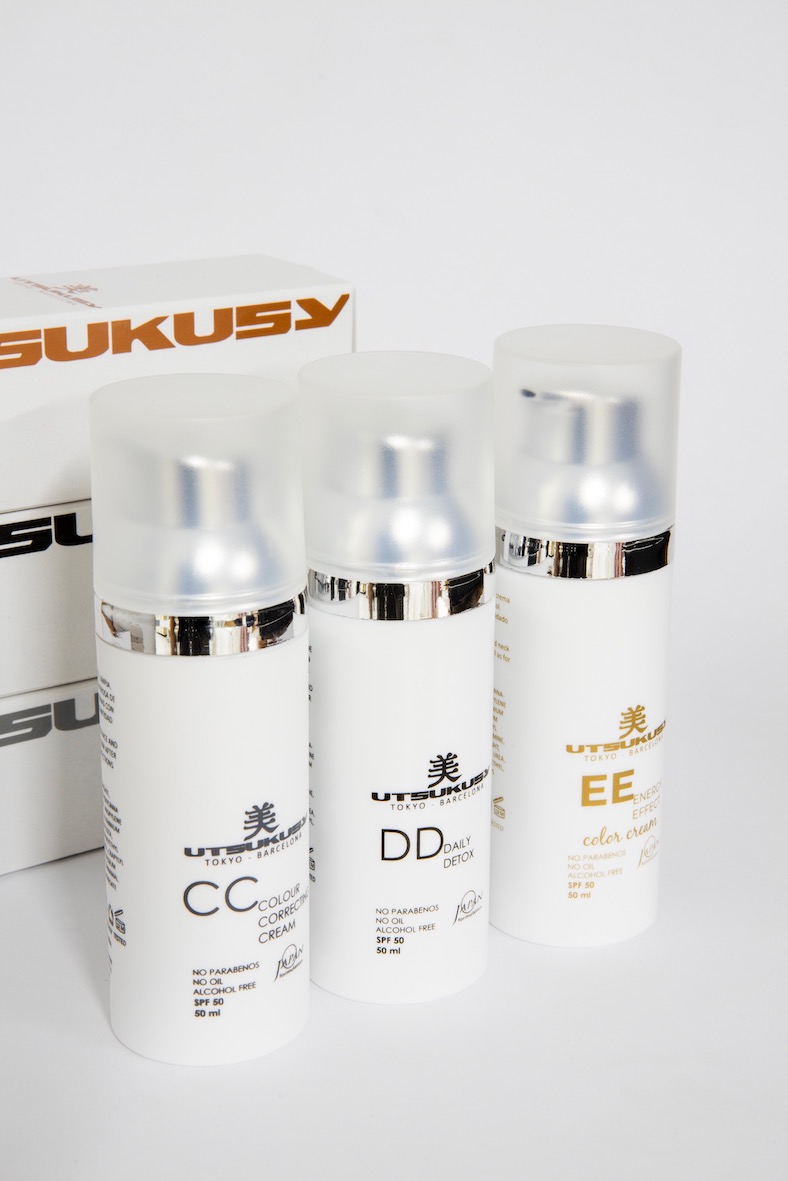
Tinted day creams with SPF 50 from Utsukusy Cosmetics
The only difference between the three tinted day creams from Utsukusy Cosmetics is their colour.
CC Cream = light
EE Cream = medium
DD Cream = dark
Also make sure to remove your make-up thoroughly before going to bed to let the skin breathe and prevent clogging.
Hands off the blemishes
Constantly touching and playing around with blemishes can make the situation worse. Avoid touching your skin unnecessarily or picking at the pimples as this can lead to inflammation, infection and scarring. If you feel the need to treat a blemish, use a spot treatment or consult a dermatologist instead.
Healthy diet and lifestyle
A balanced diet and healthy lifestyle can also have a positive impact on the skin. Make sure you eat a vitamin-rich diet with plenty of fruit, vegetables and wholemeal products. Avoid fatty, sugary and highly processed foods as they can promote inflammation. Regular exercise, sufficient sleep and stress management are also important factors for healthy skin.
Visit a dermatologist
If you continue to suffer from severe blemishes or acne despite a diligent skincare regime and applying the above tips, it is advisable to see a dermatologist. A dermatologist can make an accurate diagnosis and recommend personalised treatment options, such as prescription medication, topical creams or specific skin improvement procedures.
By incorporating these tips into your daily skincare routine, you can improve the appearance of blemished skin and achieve healthy, glowing skin in the long term. Keep in mind that caring for blemished skin requires patience, and it may take some time before you notice significant improvements. Stay consistent with your skincare regime and be kind to your skin for the best results.
Frequently asked questions about blemished skin
What are the most common causes of blemished skin?
Blemished skin can be caused by various factors. The most common causes include hormonal changes, especially during puberty, pregnancy or menstruation. Hormones can increase sebum production and lead to clogged pores. Genetic predisposition also plays a role, as certain skin types are more prone to blemishes. Another common trigger for blemished skin is environmental factors such as air pollution and high humidity, which can make the skin more prone to clogging. Poor dietary habits, stress, inadequate hygiene and incorrect skin care products can also contribute to blemished skin.
What role does diet play in blemished skin?
Diet can have an impact on the appearance of blemished skin. Although there are no specific foods that directly cause blemishes, certain foods can influence the condition of the skin. A diet rich in sugary and fatty foods can lead to increased sebum production and increase the risk of congestion. On the other hand, a balanced diet rich in fresh fruit, vegetables, wholemeal products and lean protein can support skin health. Drinking plenty of water is recommended to moisturise the skin and flush out toxins.
What role does cleansing play in treating blemished skin?
Proper cleansing of the skin is an essential part of treating blemished skin. Thorough cleansing removes excess sebum, dirt and impurities that can clog pores. It is important to use a mild cleanser specifically designed for blemished skin. However, avoid excessive washing as this can dry out the skin and lead to increased sebum production. Wash your face twice a day with lukewarm water and gently massage in the cleanser. Then rinse thoroughly and pat your skin dry instead of rubbing it.
What role does cleansing play in treating blemished skin?
It is recommended not to squeeze out blemishes yourself. Squeezing pimples can increase inflammation, worsen infection and cause scarring. If you feel the need to treat a pimple, use a spot treatment with ingredients such as benzoyl peroxide, salicylic acid or tea tree oil. These can help reduce inflammation and speed up healing. If you're struggling to deal with blemishes, consult a dermatologist who can offer professional advice and treatment options.
Can blemished skin also occur in adulthood?
Yes, blemished skin can also occur in adulthood. Adults can suffer from hormonal changes, stress, improper skin care or genetic predisposition that can lead to blemishes. This form of blemished skin is often referred to as "adult acne". It is important to understand that blemished skin is not an exclusive problem of youth and adults can also be affected by blemishes. Proper skin care and a healthy lifestyle can help to treat and improve blemished skin even in adulthood.
What role does stress play in blemished skin?
Stress can have a significant impact on the skin and promote the appearance of blemishes. When you are stressed, the body releases hormones that can increase sebum production. This can lead to clogged pores and increase the risk of pimples and blackheads. In addition, stressed people tend to touch or scratch their skin more, which can increase inflammation. It is important to practice stress management techniques such as regular exercise, relaxation exercises and adequate sleep to minimise the effects of stress on the skin.
How long does it take to see improvement in blemished skin?
The improvement of blemished skin can vary from person to person. It can take a few weeks to months to see significant improvements, depending on the severity of the blemishes and the treatment methods used. It is important to be patient and remain consistent with your skincare regime and recommended treatments. If problems persist, it is advisable to consult a dermatologist who can develop a personalised treatment strategy to effectively treat blemished skin.
By considering these frequently asked questions about blemished skin and taking the appropriate action, you can better understand how to properly care for and treat your skin. Every case of blemished skin is unique, and it's important to find an individualised approach that works best for you. However, if you continue to struggle with blemished skin, don't hesitate to seek professional help from a dermatologist for a comprehensive diagnosis and appropriate treatment.
Conclusion
Blemished skin can be a challenge, but with the right care and products, you can improve the appearance of your skin. Thorough cleansing, using appropriate skincare products and following healthy skin habits can help reduce blemishes and balance your skin. For more serious skin problems, however, you should always consult a dermatologist to get the best possible treatment. Start your new skincare routine today and enjoy cleaner, clearer skin!

